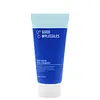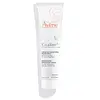What's inside
What's inside
 Key Ingredients
Key Ingredients

 Benefits
Benefits

 Concerns
Concerns

 Ingredients Side-by-side
Ingredients Side-by-side

Water
Skin ConditioningCaprylic/Capric Triglyceride
MaskingCaprylic/Capric/Succinic Triglyceride
EmollientGlycerin
HumectantVitis Vinifera Seed Oil
EmollientCetearyl Alcohol
EmollientSucrose Cocoate
EmulsifyingPolycitronellol
Behenyl Alcohol
EmollientPrunus Domestica Seed Extract
EmollientDimer Dilinoleyl Dimer Dilinoleate
EmollientC28-52 Olefin/Undecylenic Acid Copolymer
Propanediol
SolventBehenyl Behenate
EmollientTamarindus Indica Seed Gum
Emulsion StabilisingBetulin
Skin ConditioningPotassium Cetyl Phosphate
EmulsifyingPentylene Glycol
Skin ConditioningCaprylyl Glyceryl Ether
CleansingOryzanol
Skin ConditioningXanthan Gum
EmulsifyingPolyhydroxystearic Acid
EmulsifyingEuphorbia Cerifera Wax
Hydroxyacetophenone
AntioxidantPhospholipids
Skin ConditioningCaprylhydroxamic Acid
Trisodium Ethylenediamine Disuccinate
Citric Acid
BufferingCeramide NP
Skin ConditioningSodium Stearoyl Glutamate
CleansingPhytosterols
Skin ConditioningTocopherol
AntioxidantLecithin
EmollientCeramide AP
Skin ConditioningHelianthus Annuus Seed Oil
EmollientSphingolipids
EmollientSodium Citrate
BufferingAscorbyl Palmitate
AntioxidantOleic Acid
EmollientGlyceryl Caprylate
EmollientMyristic Acid
CleansingPalmitic Acid
EmollientCaprylyl Glycol
EmollientP-Anisic Acid
MaskingWater, Caprylic/Capric Triglyceride, Caprylic/Capric/Succinic Triglyceride, Glycerin, Vitis Vinifera Seed Oil, Cetearyl Alcohol, Sucrose Cocoate, Polycitronellol, Behenyl Alcohol, Prunus Domestica Seed Extract, Dimer Dilinoleyl Dimer Dilinoleate, C28-52 Olefin/Undecylenic Acid Copolymer, Propanediol, Behenyl Behenate, Tamarindus Indica Seed Gum, Betulin, Potassium Cetyl Phosphate, Pentylene Glycol, Caprylyl Glyceryl Ether, Oryzanol, Xanthan Gum, Polyhydroxystearic Acid, Euphorbia Cerifera Wax, Hydroxyacetophenone, Phospholipids, Caprylhydroxamic Acid, Trisodium Ethylenediamine Disuccinate, Citric Acid, Ceramide NP, Sodium Stearoyl Glutamate, Phytosterols, Tocopherol, Lecithin, Ceramide AP, Helianthus Annuus Seed Oil, Sphingolipids, Sodium Citrate, Ascorbyl Palmitate, Oleic Acid, Glyceryl Caprylate, Myristic Acid, Palmitic Acid, Caprylyl Glycol, P-Anisic Acid
Water
Skin ConditioningCaprylic/Capric Triglyceride
MaskingParaffinum Liquidum
EmollientGlycerin
HumectantHydrogenated Vegetable Oil
EmollientZinc Oxide
Cosmetic ColorantPropylene Glycol
HumectantPolyglyceryl-2 Sesquiisostearate
EmulsifyingPEG-22/Dodecyl Glycol Copolymer
EmulsifyingAluminum Stearate
Cosmetic ColorantAquaphilus Dolomiae Ferment Filtrate
Skin ConditioningArginine
MaskingBeeswax
Emulsion StabilisingCopper Sulfate
Skin ConditioningMagnesium Stearate
Cosmetic ColorantMicrocrystalline Wax
Emulsion StabilisingTromethamine
BufferingZinc Sulfate
AntimicrobialWater, Caprylic/Capric Triglyceride, Paraffinum Liquidum, Glycerin, Hydrogenated Vegetable Oil, Zinc Oxide, Propylene Glycol, Polyglyceryl-2 Sesquiisostearate, PEG-22/Dodecyl Glycol Copolymer, Aluminum Stearate, Aquaphilus Dolomiae Ferment Filtrate, Arginine, Beeswax, Copper Sulfate, Magnesium Stearate, Microcrystalline Wax, Tromethamine, Zinc Sulfate
 Reviews
Reviews

Ingredients Explained
These ingredients are found in both products.
Ingredients higher up in an ingredient list are typically present in a larger amount.
This ingredient is an emollient, solvent, and texture enhancer. It is considered a skin-softener by helping the skin prevent moisture loss.
It helps thicken a product's formula and makes it easier to spread by dissolving clumping compounds.
Caprylic Triglyceride is made by combining glycerin with coconut oil, forming a clear liquid.
While there is an assumption Caprylic Triglyceride can clog pores due to it being derived from coconut oil, there is no research supporting this.
Learn more about Caprylic/Capric TriglycerideGlycerin is already naturally found in your skin. It helps moisturize and protect your skin.
A study from 2016 found glycerin to be more effective as a humectant than AHAs and hyaluronic acid.
As a humectant, it helps the skin stay hydrated by pulling moisture to your skin. The low molecular weight of glycerin allows it to pull moisture into the deeper layers of your skin.
Hydrated skin improves your skin barrier; Your skin barrier helps protect against irritants and bacteria.
Glycerin has also been found to have antimicrobial and antiviral properties. Due to these properties, glycerin is often used in wound and burn treatments.
In cosmetics, glycerin is usually derived from plants such as soybean or palm. However, it can also be sourced from animals, such as tallow or animal fat.
This ingredient is organic, colorless, odorless, and non-toxic.
Glycerin is the name for this ingredient in American English. British English uses Glycerol/Glycerine.
Learn more about GlycerinWater. It's the most common cosmetic ingredient of all. You'll usually see it at the top of ingredient lists, meaning that it makes up the largest part of the product.
So why is it so popular? Water most often acts as a solvent - this means that it helps dissolve other ingredients into the formulation.
You'll also recognize water as that liquid we all need to stay alive. If you see this, drink a glass of water. Stay hydrated!
Learn more about Water